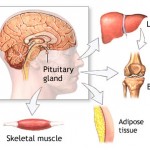Difference between IGF-1 and IGF-1 Long R3
 July 29, 2013
July 29, 2013  IGF-1 Long R3 Information
IGF-1 Long R3 Information
Growth factors like IGF play an important role in childhood, specifically puberty. IGF is responsible for natural muscle growth that occurs during puberty, along with other functions like increased glucose transport, increased protein synthesis, increased RNA synthesis, increased amino acid transport to cells, and decreased protein degradation.
However, there are different forms of IGF, such as IGF-1 and IGF-1 LR3 that have varied potencies and functions.
IGF-1
Insulin-like Growth Factor 1, abbreviated IGF-1, is a protein that is encoded by the IGF1 gene. It consists of 70 amino acids and is a hormone that is structured similarly to insulin. Its main function is to stimulate growth within the body due to its regulation of both cell growth and cell death.
Synthetic IGF-1 serves as an alternative to solely relying on the pituitary gland to make Human Growth Hormone (HGH). The pituitary gland decreases function with age, but the IGF-1 bypasses that organ and produces the same effects of growth hormone.
IGF-1 Long R3
IGF-1 Long R3, or IGF-1 LR3, is a form of IGF that has been chemically altered with changed amino acids. It consists of 83 amino acids with a substation of Arg(R) for the Glu(E) at position three, hence, the name R3. The altercations enable it to avoid binding to proteins in the body, which allows it to have a longer half-life.
According to Peptide Labs, IGF-1 LR3 is more potent than the regular IGF-1 because of the decreased binding of Long R3 IGF-1 to IGF binding proteins. Its main purpose is to increase the biological activity of IGF.
Essentially, when IGF-1 LR3 is active in the body, it functions differently in different types of tissues. For instance, in muscle tissue, it makes the muscle more sensitive to insulin’s effects, such as a reduction in fat storage. But while IGF-1 LR3 helps fat reduction, a person using it will experience weight gain because of the increase in pure-muscle weight.
Uses
Both IGF-1 and IGF-1 LR3 help increase muscle cells in tissue. Bodybuilders or people who want a more muscular physique use these IGF variations as a way to build muscle. With weight training, the hormones mature the new cells, making them grow and become stronger muscle tissue within the body.




